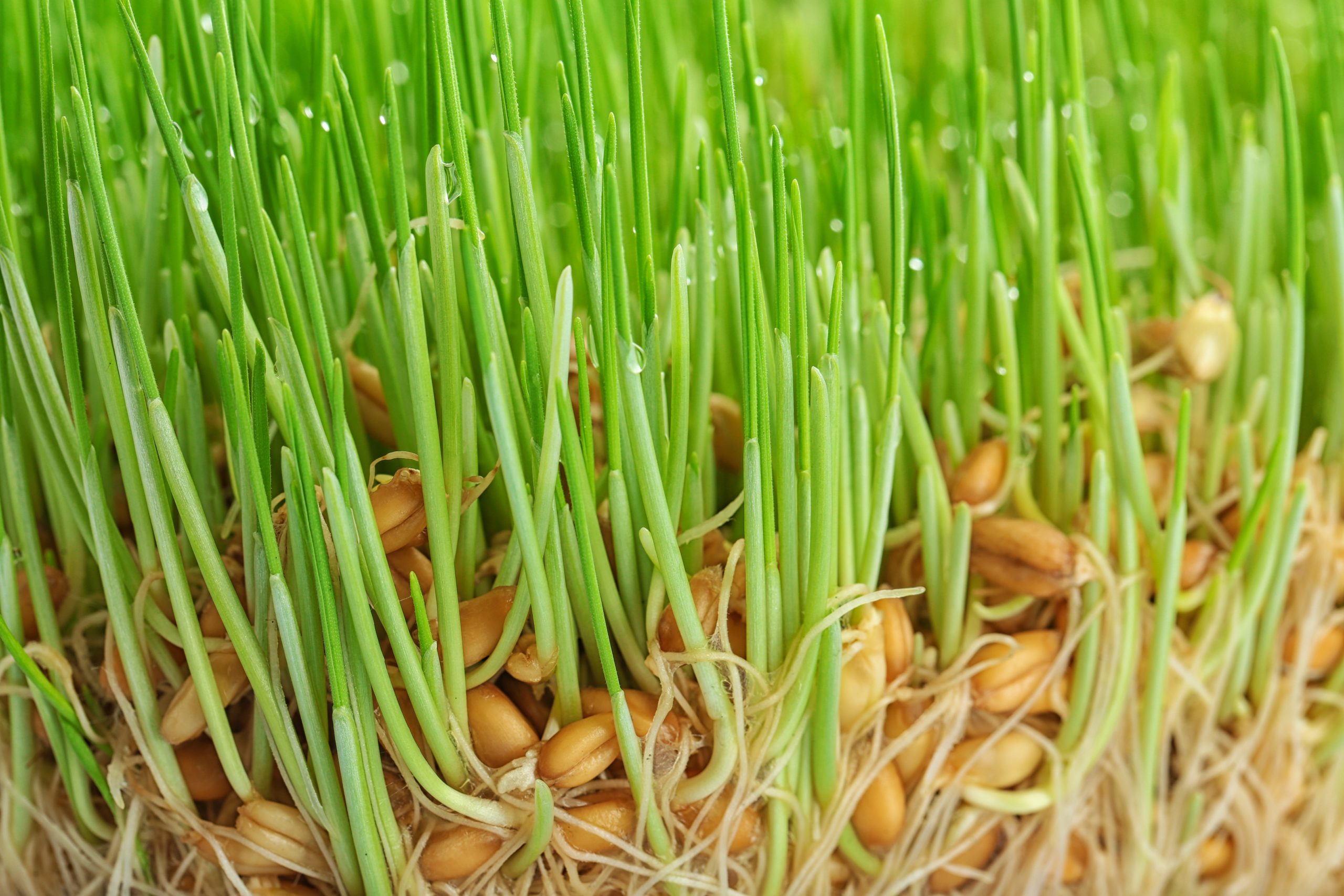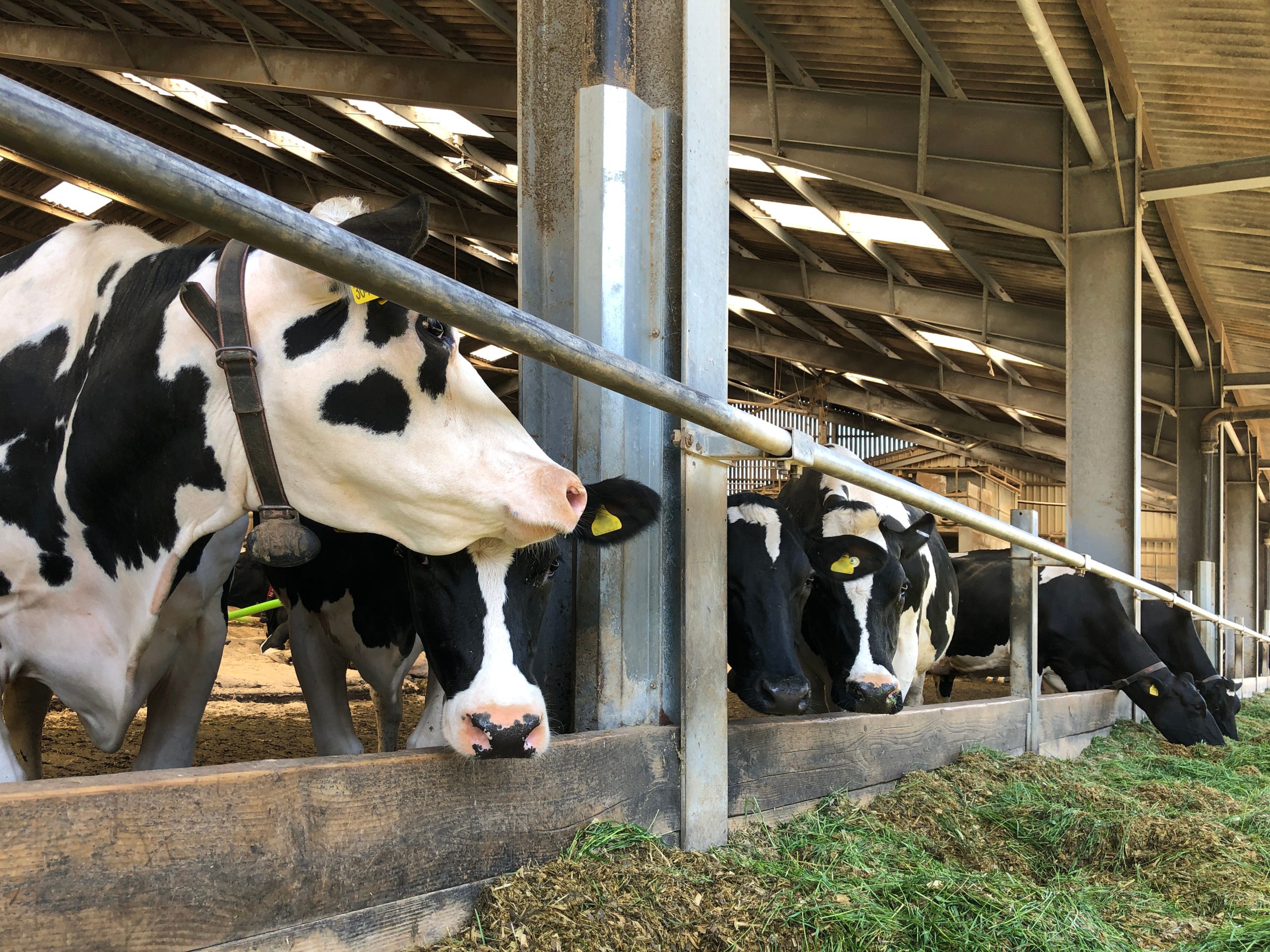Abstract:
Fodder and alfalfa are essential components of livestock nutrition, providing the necessary nutrients for healthy growth and productivity. This white paper aims to compare and contrast the benefits of these two feed options, with a particular focus on the advantages of wet feed from fodder and the nutrient loss associated with drying alfalfa. Recent studies reveal valuable insights into the benefits of wet feed, emphasizing its potential to revolutionize livestock nutrition and mitigate the challenges associated with traditional drying methods for alfalfa.
Introduction
Livestock farming is a critical component of the global agricultural industry, providing meat, dairy, and other products that are vital for human consumption. To ensure the health and productivity of livestock, it is essential to provide them with nutritious and balanced feed. Fodder and alfalfa are two commonly used feed options, each with its unique characteristics and advantages.
Fodder: A Revolution in Livestock Nutrition
1. Understanding Fodder
Fodder, also known as hydroponically grown fodder or sprouted grains, is a form of livestock feed produced by sprouting grains such as barley, wheat, or oats in a controlled environment. The result is a highly nutritious, green, and succulent feed source that is typically consumed by livestock in its fresh, wet state.
2. Recent Studies on Fodder
Recent studies have shed light on the benefits of incorporating fodder into livestock diets:
a. Improved Nutrient Absorption
Fodder has been found to enhance nutrient absorption in livestock due to its high moisture content and easily digestible nature. This is particularly advantageous for young animals and lactating cows, where efficient nutrient utilization is critical.
b. Enhanced Palatability
Livestock, including cattle and poultry, tend to find fodder highly palatable. This improved palatability can lead to increased feed intake and, subsequently, improved growth rates and milk production.
c. Reduced Environmental Impact
Fodder production is resource-efficient, requiring minimal water and land compared to traditional forage crops like alfalfa. Its controlled environment reduces the need for synthetic fertilizers and pesticides.
3. Wet Feed from Fodder
One of the most significant advantages of fodder is its wet feed nature. Livestock consume it in its succulent state, providing them with both nutrition and hydration simultaneously. This unique characteristic addresses a common challenge in livestock farming: maintaining adequate hydration, especially in hot and dry climates.
4. Fodder Case Studies
Several farms and livestock operations around the world have adopted fodder as a primary feed source, reporting positive outcomes in terms of animal health, growth, and milk production.
Alfalfa: A Staple in Livestock Feeding
1. Understanding Alfalfa
Alfalfa is a perennial forage crop widely used in livestock diets. It is valued for its high protein content and fiber, making it an essential component of many livestock rations. Traditionally, alfalfa is harvested, dried, and stored for later use.
2. Challenges of Drying Alfalfa
Drying alfalfa has been the standard practice for preserving this valuable forage crop. However, recent research highlights some significant challenges associated with this process:
a. Nutrient Loss
Drying alfalfa can result in nutrient loss. Vitamins, such as vitamin A and certain B vitamins, are particularly susceptible to degradation during the drying process. This can reduce the overall nutritional value of the feed.
b. Protein Degradation
Proteins in alfalfa can undergo degradation during drying, leading to a reduction in protein quality. This can affect the growth and productivity of livestock that rely on alfalfa-based diets.
c. Increased Environmental Footprint
The process of drying alfalfa often requires significant energy inputs, contributing to a higher environmental footprint compared to more resource-efficient feed options like fodder.
3. Alfalfa vs. Fodder
Let’s compare and contrast the benefits of alfalfa and fodder:
a. Nutrient Retention
Fodder, being consumed in its wet state, retains more nutrients compared to dried alfalfa. This can lead to better livestock nutrition and performance.
b. Hydration
Fodder’s high moisture content contributes to livestock hydration, reducing the need for additional water sources in some cases. Dried alfalfa, on the other hand, lacks this advantage.
c. Sustainability
Fodder production is often more sustainable than traditional alfalfa farming due to its reduced resource requirements and lower environmental impact.
Conclusion
In conclusion, both fodder and alfalfa are essential components of livestock nutrition, each with its unique set of advantages and challenges. Recent studies highlight the significant benefits of wet feed from fodder, particularly in terms of improved nutrient absorption, enhanced palatability, and reduced environmental impact. Fodder’s ability to address hydration needs in livestock is a game-changer, especially in regions with limited water resources.
On the other hand, alfalfa remains a valuable source of protein and fiber for livestock. However, the drying process poses challenges, including nutrient loss and environmental concerns.
As the livestock industry evolves, it is essential to consider these feed options’ strengths and weaknesses. Fodder, with its innovative approach to livestock nutrition, has the potential to revolutionize the way we feed our animals, ultimately leading to healthier and more productive livestock while addressing sustainability challenges. In contrast, alfalfa, a staple in livestock feeding, may require improvements in preservation methods to reduce nutrient loss and environmental impact.
Ultimately, the choice between fodder and alfalfa depends on specific livestock farming goals, resource availability, and environmental considerations. Both feed options have their place in modern agriculture, and ongoing research and innovation will continue to shape the future of livestock nutrition.
백서: 가축 사육 시 사료와 알팔파 비교 및 대조
추상적인
사료와 알팔파는 가축 영양의 필수 구성 요소로서 건강한 성장과 생산성에 필요한 영양소를 제공합니다. 본 백서는 사료의 습식 사료의 장점과 알팔파 건조와 관련된 영양 손실에 특히 중점을 두고 이 두 가지 사료 옵션의 이점을 비교하고 대조하는 것을 목표로 합니다. 최근 연구에서는 젖은 사료의 이점에 대한 귀중한 통찰력을 보여주며, 가축 영양에 혁명을 일으키고 알팔파의 전통적인 건조 방법과 관련된 문제를 완화할 수 있는 잠재력을 강조합니다.
소개
가축 사육은 육류, 유제품 및 인간 소비에 필수적인 기타 제품을 제공하는 글로벌 농업 산업의 중요한 구성 요소입니다. 가축의 건강과 생산성을 보장하기 위해서는 영양가 있고 균형 잡힌 사료를 공급하는 것이 필수적입니다. 사료와 알팔파는 일반적으로 사용되는 두 가지 사료 옵션이며 각각 고유한 특성과 장점을 가지고 있습니다.
사료: 가축 영양의 혁명
1. 사료의 이해
수경 재배 사료 또는 발아 곡물이라고도 알려진 사료는 통제된 환경에서 보리, 밀 또는 귀리와 같은 곡물을 발아시켜 생산되는 가축 사료의 한 형태입니다. 그 결과 일반적으로 가축이 신선하고 젖은 상태로 소비하는 영양가가 높고 녹색이며 즙이 많은 사료 공급원이 탄생했습니다.
2. 사료에 관한 최근 연구
최근 연구에서는 가축 사료에 사료를 첨가하는 것의 이점이 밝혀졌습니다.
ㅏ. 향상된 영양 흡수
사료는 높은 수분 함량과 쉽게 소화되는 특성으로 인해 가축의 영양 흡수를 향상시키는 것으로 밝혀졌습니다. 이는 효율적인 영양분 활용이 중요한 어린 동물과 젖소에게 특히 유리합니다.
비. 향상된 기호성
소와 가금류를 포함한 가축은 사료의 맛이 매우 좋은 경향이 있습니다. 이러한 향상된 기호성은 사료 섭취량을 증가시키고 결과적으로 성장률과 우유 생산량을 향상시킬 수 있습니다.
씨. 환경 영향 감소
사료 생산은 자원 효율적이므로 알팔파와 같은 전통적인 마초 작물에 비해 최소한의 물과 토지가 필요합니다. 통제된 환경으로 인해 합성 비료와 살충제의 필요성이 줄어듭니다.
3. 사료의 습식사료
사료의 가장 중요한 장점 중 하나는 습식 사료 특성입니다. 가축은 즙이 많은 상태로 섭취하여 영양과 수분을 동시에 공급합니다. 이 독특한 특성은 특히 덥고 건조한 기후에서 적절한 수분 공급을 유지하는 축산업의 일반적인 과제를 해결합니다.
4. 사료 사례 연구
전 세계의 몇몇 농장과 축산업에서는 사료를 주요 사료 공급원으로 채택하여 동물 건강, 성장 및 우유 생산 측면에서 긍정적인 결과를 보고했습니다.
알팔파: 가축 사육의 필수품
1. 알팔파의 이해
알팔파는 가축 사료에 널리 사용되는 다년생 마초 작물입니다. 높은 단백질 함량과 섬유질로 인해 많은 가축 사료의 필수 구성 요소로 평가됩니다. 전통적으로 알팔파는 수확, 건조 및 나중에 사용하기 위해 저장됩니다.
2. 알팔파 건조의 과제
자주개자리를 건조하는 것은 이 귀중한 마초 작물을 보존하기 위한 표준 관행이었습니다. 그러나 최근 연구에서는 이 프로세스와 관련된 몇 가지 중요한 과제를 강조합니다.
ㅏ. 영양 손실
알팔파를 건조하면 영양분 손실이 발생할 수 있습니다. 비타민 A 및 특정 비타민 B와 같은 비타민은 특히 건조 과정에서 분해되기 쉽습니다. 이는 사료의 전반적인 영양가를 감소시킬 수 있습니다.
비. 단백질 분해
알팔파의 단백질은 건조 중에 분해되어 단백질 품질이 저하될 수 있습니다. 이는 알팔파 기반 식단에 의존하는 가축의 성장과 생산성에 영향을 미칠 수 있습니다.
씨. 환경 발자국 증가
자주개자리를 건조하는 과정에는 상당한 에너지 투입이 필요한 경우가 많으며, 이는 사료와 같이 보다 자원 효율적인 사료 옵션에 비해 더 높은 환경 발자국에 기여합니다.
3. 알팔파 대 사료
알팔파와 사료의 이점을 비교하고 대조해 보겠습니다.
ㅏ. 영양분 보유
젖은 상태로 섭취되는 사료는 말린 알팔파에 비해 더 많은 영양분을 유지합니다. 이는 더 나은 가축 영양 및 성능으로 이어질 수 있습니다.
비. 수분 공급
사료의 높은 수분 함량은 가축의 수분 공급에 기여하여 경우에 따라 추가적인 물 공급원의 필요성을 줄여줍니다. 반면에 말린 알팔파에는 이러한 이점이 없습니다.
씨. 지속 가능성
사료 생산은 자원 요구량이 적고 환경에 미치는 영향이 낮기 때문에 전통적인 알팔파 농업보다 지속가능성이 더 높은 경우가 많습니다.
결론
결론적으로, 사료와 알팔파는 모두 가축 영양의 필수 구성 요소이며 각각 고유한 장점과 과제를 가지고 있습니다. 최근 연구에서는 특히 영양분 흡수 개선, 기호성 향상, 환경 영향 감소 측면에서 습식사료의 중요한 이점을 강조합니다. 가축의 수분 공급 요구를 해결하는 Fodder의 능력은 특히 수자원이 제한된 지역에서 게임 체인저입니다.
반면, 알팔파는 가축을 위한 귀중한 단백질과 섬유질 공급원으로 남아 있습니다. 그러나 건조 과정은 영양분 손실과 환경 문제 등의 문제를 안고 있습니다.
축산업이 발전함에 따라 이러한 사료 옵션의 강점과 약점을 고려하는 것이 필수적입니다. 가축 영양에 대한 혁신적인 접근 방식을 갖춘 사료는 동물에게 먹이를 주는 방식을 혁신하여 궁극적으로 지속 가능성 문제를 해결하는 동시에 더 건강하고 생산적인 가축을 생산할 수 있는 잠재력을 가지고 있습니다. 대조적으로, 가축 사료의 주요 성분인 알팔파는 영양 손실과 환경 영향을 줄이기 위해 보존 방법의 개선이 필요할 수 있습니다.
궁극적으로 사료와 알팔파 사이의 선택은 특정 축산업 목표, 자원 가용성 및 환경 고려 사항에 따라 달라집니다. 두 가지 사료 옵션 모두 현대 농업에서 그 자리를 차지하고 있으며 지속적인 연구와 혁신은 계속해서 가축 영양의 미래를 형성할 것입니다.

